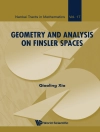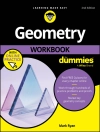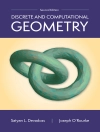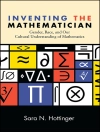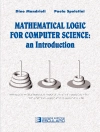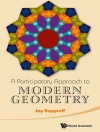The papers collected in this volume are contributions to the 43rd session of the Seminaire ´ de mathematiques ´ superieures ´ (SMS) on “Morse Theoretic Methods in Nonlinear Analysis and Symplectic Topology.” This session took place at the Universite ´ de Montreal ´ in July 2004 and was a NATO Advanced Study Institute (ASI). The aim of the ASI was to bring together young researchers from various parts of the world and to present to them some of the most signi cant recent advances in these areas. More than 77 mathematicians from 17 countries followed the 12 series of lectures and participated in the lively exchange of ideas. The lectures covered an ample spectrum of subjects which are re ected in the present volume: Morse theory and related techniques in in nite dim- sional spaces, Floer theory and its recent extensions and generalizations, Morse and Floer theory in relation to string topology, generating functions, structure of the group of Hamiltonian di?eomorphisms and related dynamical problems, applications to robotics and many others. We thank all our main speakers for their stimulating lectures and all p- ticipants for creating a friendly atmosphere during the meeting. We also thank Ms. Diane Belanger ´ , our administrative assistant, for her help with the organi- tion and Mr. Andre ´ Montpetit, our technical editor, for his help in the preparation of the volume.
Table des matières
Preface.Contributors. Lectures on the Morse Complex for Infinite-Dimensional Manifolds.-1. A few facts from hyperbolic dynamics.-1.1 Adapted norms .-1.2 Linear stable and unstable spaces of an asymptotically hyperbolic path.-1.3 Morse vector fields.- 1.4 Local dynamics near a hyperbolic rest point ; 1.5 Local stable and unstable manifolds.- 1.6 The Grobman – Hartman linearization theorem.-1.7 Global stable and unstable manifolds.- 2 The Morse complex in the case of finite Morse indices.- 2.1 The Palais – Smale condition.-2.2 The Morse – Smale condition .-2.3 The assumptions .- 2.4 Forward compactness.- 2.5 Consequences of compactness and transversality.- 2.6 Cellular filtrations.- 2.7 The Morse complex.- 2.8 Representation of $/delta$* in terms of intersection numbers.- 2.9 How to remove the assumption (A8).- 2.10 Morse functions on Hilbert manifolds.-2.11 Basic results in transversality theory .- 2.12 Genericity of the Morse – Smale condition.-2.13 Invariance of the Morse complex.- 3 The Morse complex in the case of infinite Morse indices.- 3.1 The program.-3.2 Fredholm pairs and compact perturbations of linear subspaces.- 3.3 Finite-dimensional intersections.-3.4 Essential subbundles.- 3.5 Orientations.- 3.6 Compactness .- 3.7 Two-dimensional intersections .-3.8 The Morse complex.- Bibliographical note.- Notes on Floer Homology and Loop Space Homology.- 1 Introduction.- 2 Main result.-2.1 Loop space homology.-2.2 Floer homology for the cotangent bundle.- 3 Ring structures and ring-homomorphisms.-3.1 The pair-of-pants product.- 3.2 The ring homomorphisms between free loop space Floer homology and based loop space Floer homology and classical homology.-4 Morse-homology on the loop spaces $/Lambda$Q and $/Omega$Q, and the isomorphism.-5 Products in Morse-homology .-5.1 Ring isomorphism between Morse homology and Floer homology.- Homotopical Dynamics in Symplectic Topology.- 1 Introduction .-2 Elements of Morse theory .-2.1 Connectingmanifolds.-2.2 Operations.-3 Applications to symplectic topology.- 3.1 Bounded orbits .-3.2 Detection of pseudoholomorphic strips and Hofer’s norm.- Morse Theory, Graphs, and String Topology.-1 Graphs, Morse theory, and cohomology operations.-2 String topology .-3 A Morse theoretic view of string topology.- 4 Cylindrical holomorphic curves in the cotangent bundle.- Topology of Robot Motion Planning.-1.Introduction .-2 First examples of configuration spaces .-3 Varieties of polygonal linkages.-3.1 Short and long subsets .-3.2 Poincaré polynomial of M(a) .-4 Universality theorems for configuration spaces .-5 A remark about configuration spaces in robotics .-6 The motion planning problem.-7 Tame motion planning algorithms.-8 The Schwarz genus.- 9 The second notion of topological complexity.-10 Homotopy invariance.- 11 Order of instability of a motion planning algorithm.-12 Random motion planning algorithms.- 13 Equality theorem.-14 An upper bound for TC(X).-15 A cohomological lower bound for TC(X) .-16 Examples .-17 Simultaneous control of many systems.-18 Another inequality relating TC(X) to the usual category .-19 Topological complexity of bouquets.-20 A general recipe to construct a motion planning algorithm.-21 How difficult is to avoid collisions in $/mathbb{R}$m? .-22 The case m = 2.- 23 TC(F($/mathbb{R}$m; n) in the case m $/geq$ 3 odd .- 24 Shade.-25 Illuminating the complement of the braid arrangement .-26 A quadratic motion planning algorithm in F($/mathbb{R}$m; n).-27 Configuration spaces of graphs.-28 Motion planning in projective spaces .-29 Nonsingular maps.- 30 TC(($/mathbb{R}$Pn) and the immersion problem.-31 Some open problems.- Application of Floer Homology of Langrangian Submanifolds to Symplectic Topology.- 1 Introduction.- 2 Lagrangian submanifold of $/mathbb{C}$n .-3 Perturbing Cauchy – Riemann equation.- 4 Maslov index of Lagrangian submanifold with vanishing second Betti number.-5Floer homology and a spectral sequence .-6 Homology of loop space and Chas – Sullivan bracket .-7 Iterated integral and Gerstenhaber bracket.- 8 A$_/infty$ deformation of de Rham complex.- 9 S1 equivariant homology of loop space and cyclic A1 algebra .-10 L$_/infty$ structure on H(S1 $/times$ Sn; $/mathbb{Q}$).-11 Lagrangian submanifolds of $/mathbb{C}$3 .-12 Aspherical Lagrangian submanifolds .-13 Lagrangian submanifolds homotopy equivalent to S1 $/times$ S2m .-14 Lagrangian submanifolds of $/mathbb{C}$Pn .- The $/mathcal{LS}$-Index: A Survey.- 1 Introduction .-2 The $/mathcal{LS}$-index.-2.1 Basic definitions and facts.-2.2 Spectra .-2.3 The $/mathcal{LS}$-index .- 3 Cohomology of spectra .-4 Attractors, repellers and Morse decompositions .- 5 Equivariant $/mathcal{LS}$-flows and the G-$/mathcal{LS}$-index.-5.1 Symmetries.-5.2 Isolating neighbourhoods and the equivariant $/mathcal{LS}$-index .-6 Applications.-6.1 A general setting .-6.2 Applications of the $/mathcal{LS}$-index .-6.3 Applications of the cohomological $/mathcal{LS}$-index .-6.4 Applications of the equivariant LS-index.- Lectures on Floer Theory and Spectral Invariants of Hamiltonian Flows.- 1 Introduction .-2 The free loop space and the action functional.-2.1 The free loop space and the S1-action in general.-2.2 The free loop space of symplectic manifolds.-2.3 The Novikov covering.-2.4 Perturbed action functionals and their action spectra.-2.5 The L2-gradient flow and perturbed Cauchy – Riemann equations.-2.6 Comparison of two Cauchy – Riemann equations.-3 Floer complex and the Novikov ring.-3.1 Novikov – Floer chains and the Novikov ring.-3.2 Definition of the Floer boundary map.-3.3 Definition of the Floer chain map.-3.4 Semi-positivity and transversality.-3.5 Composition law of Floer’s chain maps.-4 Energy estimates and Hofer’s geometry.- 4.1 Energy estimates and the action level changes.-4.2Energy estimates and Hofer’s norm.-4.3 Level changes of Floer chains under the homotopy .-4.4 The $/epsilon$-regularity type invariants .-5 Definition of spectral invariants and their axioms.-5.1 Floer complex of a small Morse function.-5.2 Definition of spectral invariants.-5.3 Axioms of spectral invariants.-6 The spectrality axiom.-6.1 A consequence of the nondegenerate spectrality axiom.-6.2 Spectrality axiom for the rational case.-6.3 Spectrality for the irrational case.-7 Pants product and the triangle inequality.-7.1 Quantum cohomology in the chain level.-7.2 Grading convention.-7.3 Hamiltonian fibrations and the pants product .- 7.4 Proof of the triangle inequality.-8 Spectral norm of Hamiltonian diffeomorphisms.-8.1 Construction of the spectral norm.-8.2 The $/epsilon$-regularity theorem and its consequences.-8.3 Proof of nondegeneracy.-9 Applications to Hofer geometry of Ham(M;$/omega$).-9.1 Quasi-autonomous Hamiltonians and the minimality conjecture.- 9.2 Length minimizing criterion via $/rho$(H; 1).-9.3 Canonical fundamental Floer cycles.-9.4 The case of autonomous Hamiltonians.-10 Remarks on the transversality for general (M;$omega$).- A Proof of the index formula.- Floer Homology, Dynamics and Groups.-1 Hamiltonian actions of finitely generated groups.-1.1 The group of Hamiltonian diffeomorphisms.-1.2 The no-torsion theorem.-1.3 Distortion in normed groups .-1.4 The No-Distortion Theorem.-1.5 The Zimmer program.- 2 Floer theory in action.-2.1 A brief sketch of Floer theory .-2.2 Width and torsion.-2.3 A geometry on Ham(M;$/omega$).-2.4 Width and distortion.-2.5 More remarks on the Zimmer program.-3 The Calabi quasi-morphism and related topics.-3.1 Extending the Calabi homomorphism.-3.2 Introducing quasi-morphisms.-3.3 Quasi-morphisms on Ham(M;$/omega$).-3.4 Distortion in Hofer’s norm on Ham(M;$/omega$).- 3.5 Existence and uniqueness of Calabi quasi-morphisms.-3.6 ‘Hyperbolic’ features of Ham(M;$/omega$)? .-3.7 From $/pi$1(M) to Diff0(M;$/Omega$).- Symplectic topology and Hamilton – Jacobi equations.- 1 Introduction to symplectic geometry and generating functions.-1.1 Uniqueness and first symplectic invariants.-2 The calculus of critical level sets.-2.1 The case of GFQI.-2.2 Applications.-3 Hamilton – Jacobi equations and generating functions.-4 Coupled Hamilton – Jacobi equations.-Index.






